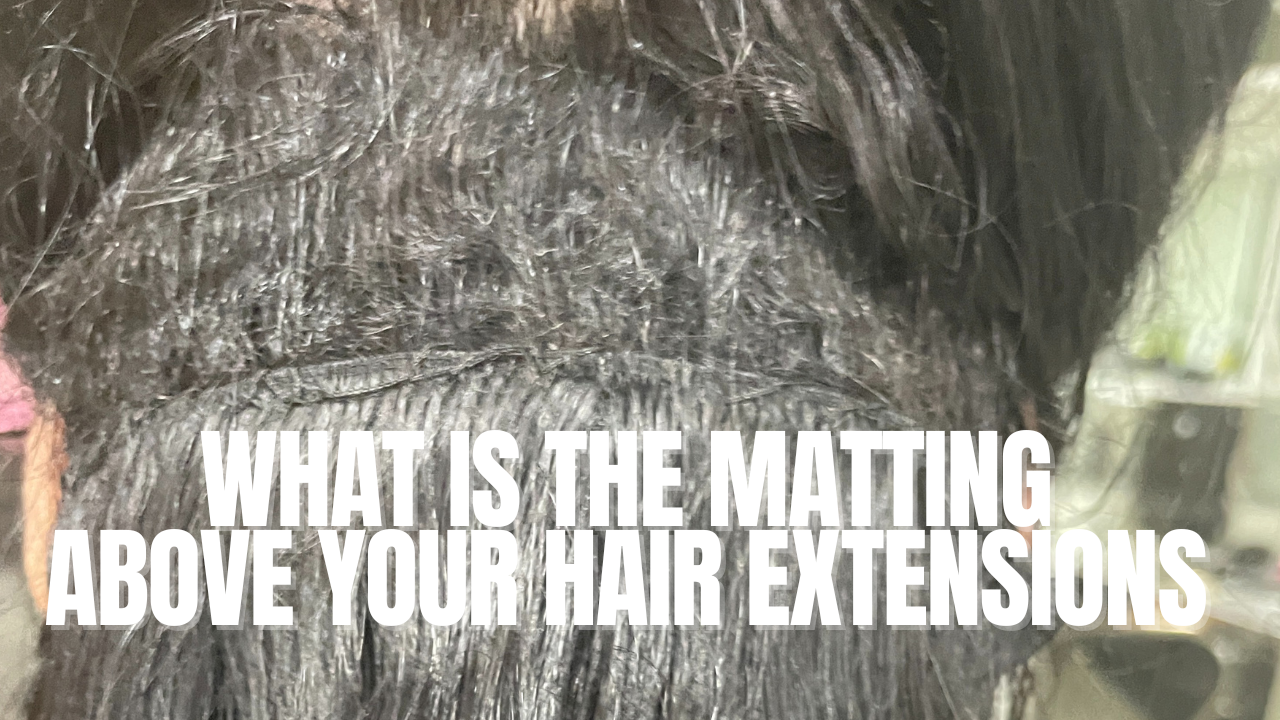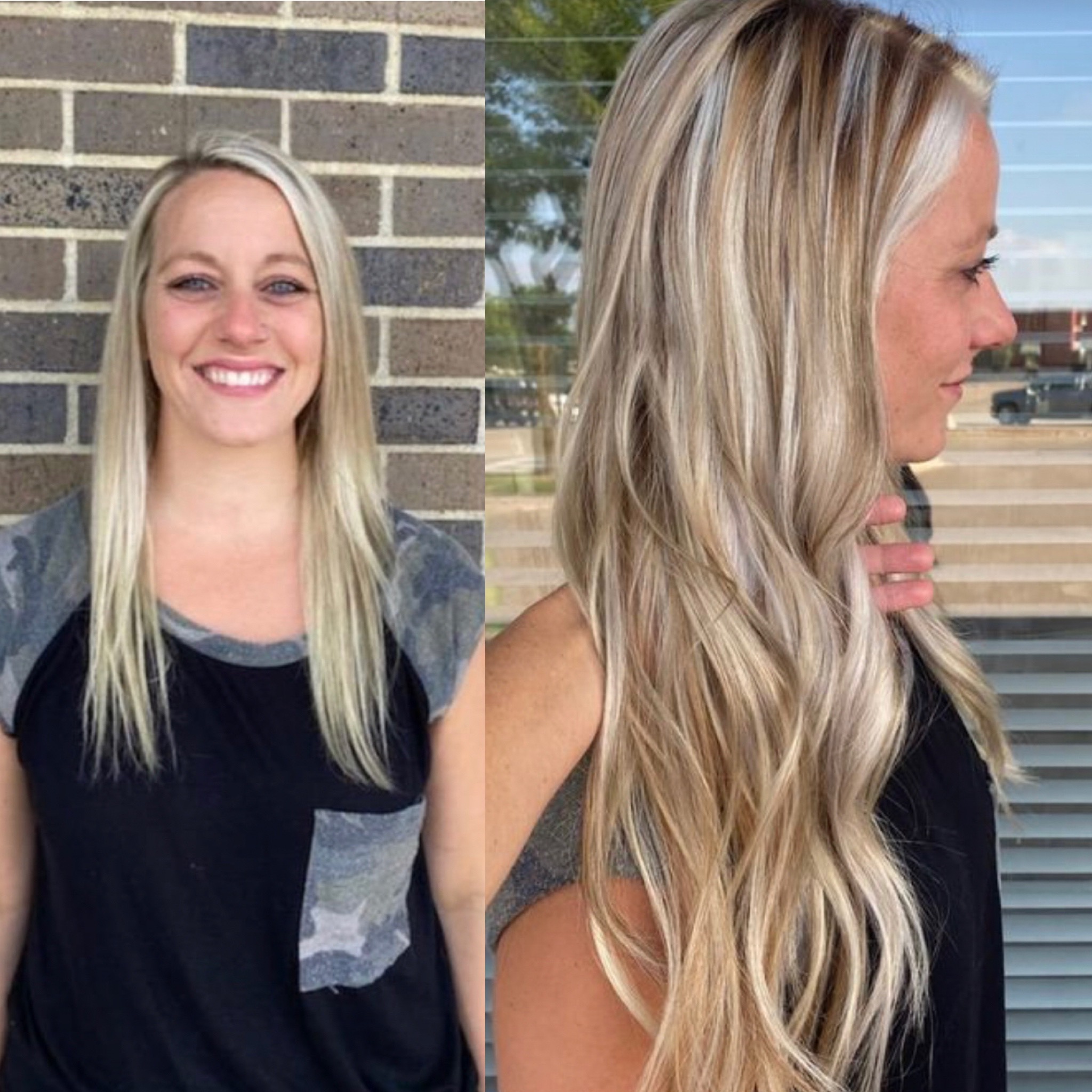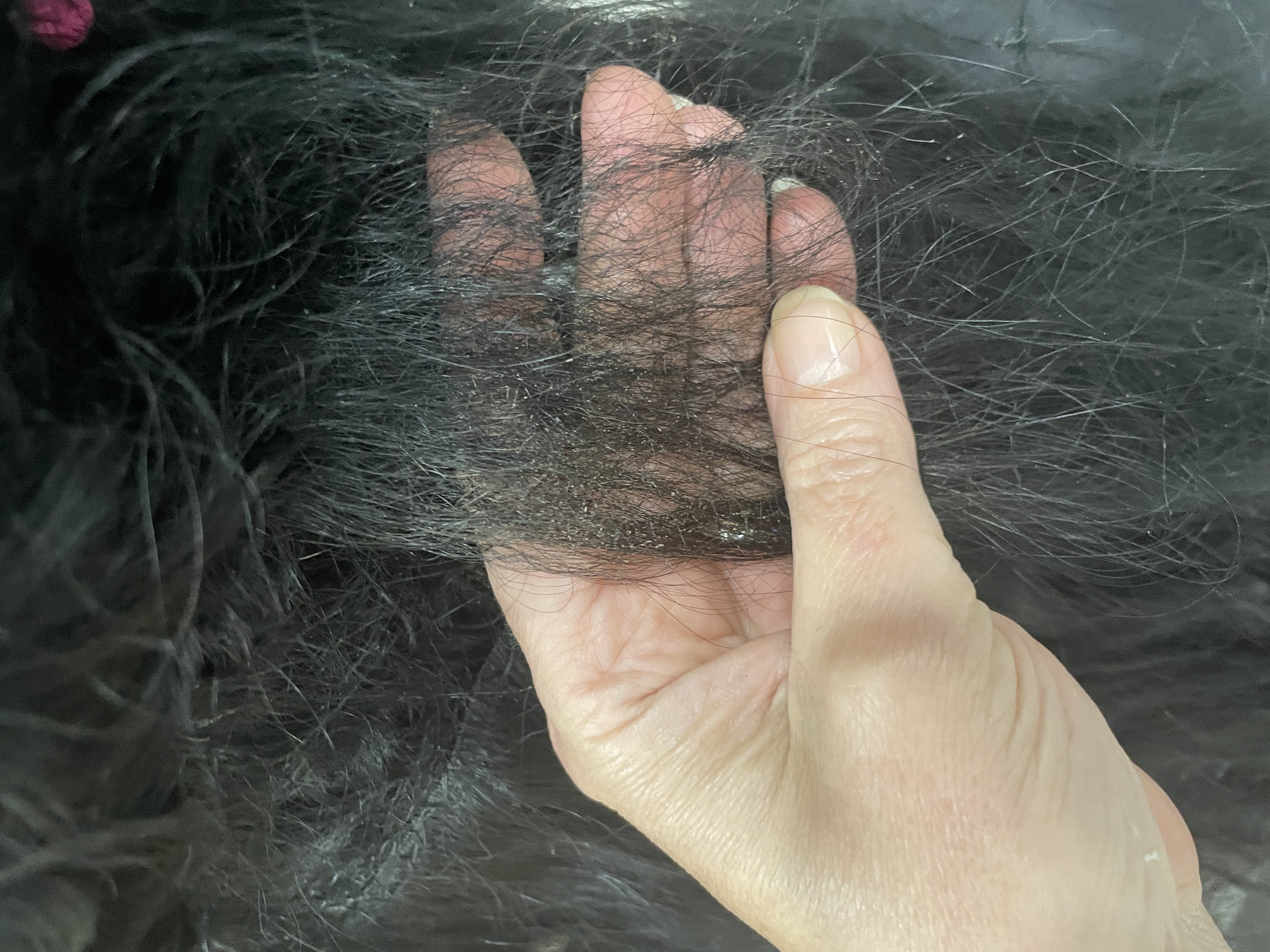Say Goodbye to Hair Extension Matting and Tangling Woes
·
Shedding and Matting: Normal for Hair Extensions
Hair extensions are a popular way to add length and volume to your hair, but many people worry about the potential side effects such as shedding and matting. The truth is that shedding and matting are normal processes that occur even with natural hair. In this blog, we will take a deep dive into the world of hair extensions. We will explore the main reasons behind hair shedding, how it affects hair extensions, and what you can do to prevent matting. We will also discuss the impact of hair extensions on your scalp and follicles, including how GBP and USD affect pricing for various extension types. Finally, we will provide tips on how to properly care for your extensions and extend their lifespan. By the end of this article, you will be equipped with all the knowledge necessary to make informed decisions about your hair extension journey. If you liked what you’ve read, share this with your friends and follow us on our social media channels to keep up with the latest trends, tips, guides, and more!
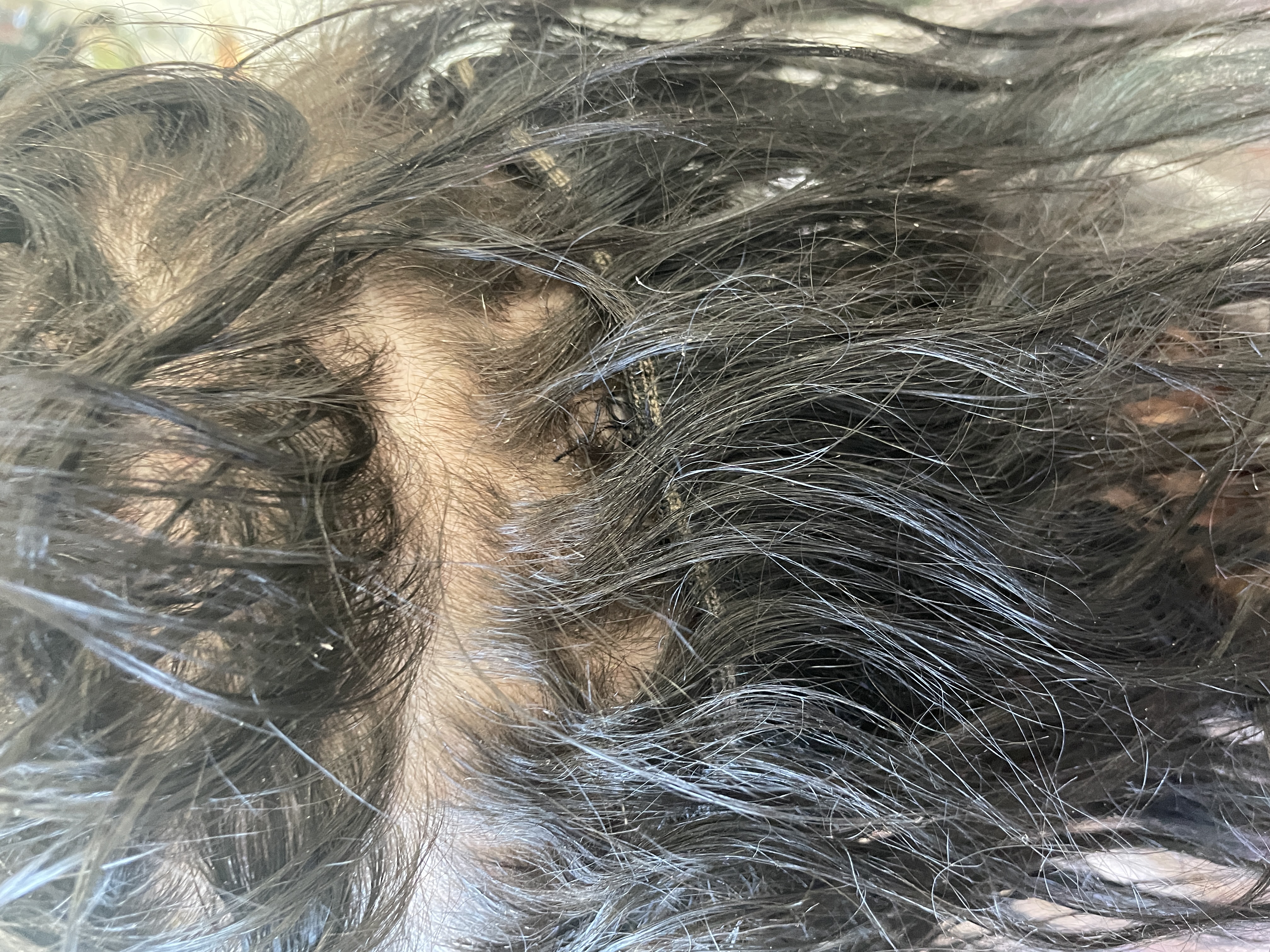
Understanding Hair Extensions
Hair extensions, whether synthetic or human hair, are affixed to natural hair for added length and volume, especially for short hair. Clip-ins, tape-ins, keratin bond, and sew-in weave extensions cater to different hair types and styling needs, requiring expert advice for the best fit. Care entails minimal heat styling, natural oil use, and regular maintenance to preserve natural waves while preventing matting and drying, especially at the ends of the hair. Seek professional consultation to ensure proper attachment and longer-lasting, natural-looking results. Consistent upkeep, avoiding tape extension glue, and using less heat styling tools guarantee no damage to your hair.
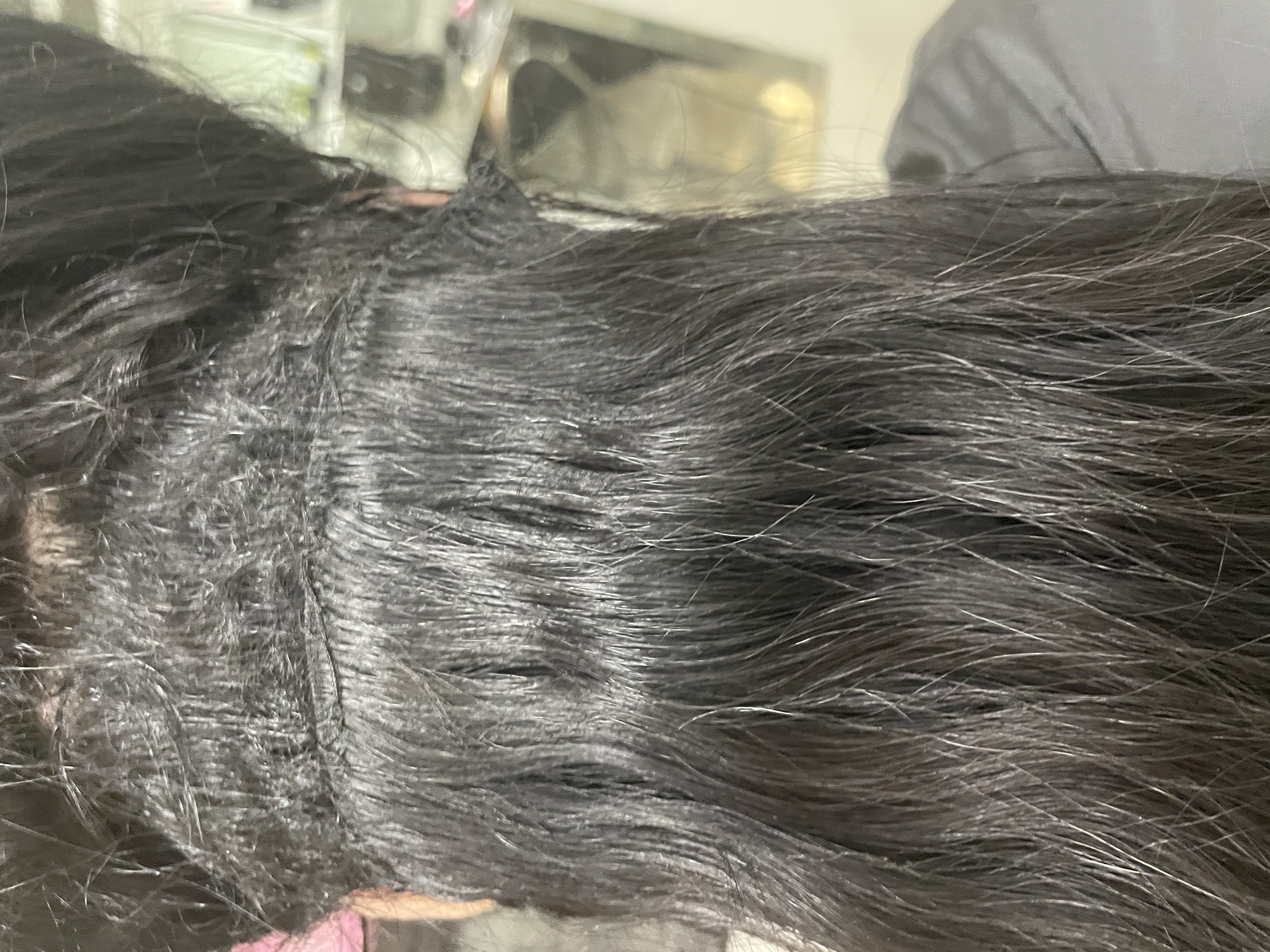
The Purpose of Hair Extensions
Hair extensions offer a solution for individuals with thin or fine hair, allowing them to achieve their dream hair goals. They are popular for special occasions like weddings, creating a desired look. Social media and hair blogs showcase the latest trends using extensions, inspiring many to explore new looks. Additionally, they add length, volume, and thickness to natural hair, providing styling versatility and enhancing overall appearance. They also offer an opportunity to experiment with different hair trends and styles, giving individuals the chance to express their creativity.
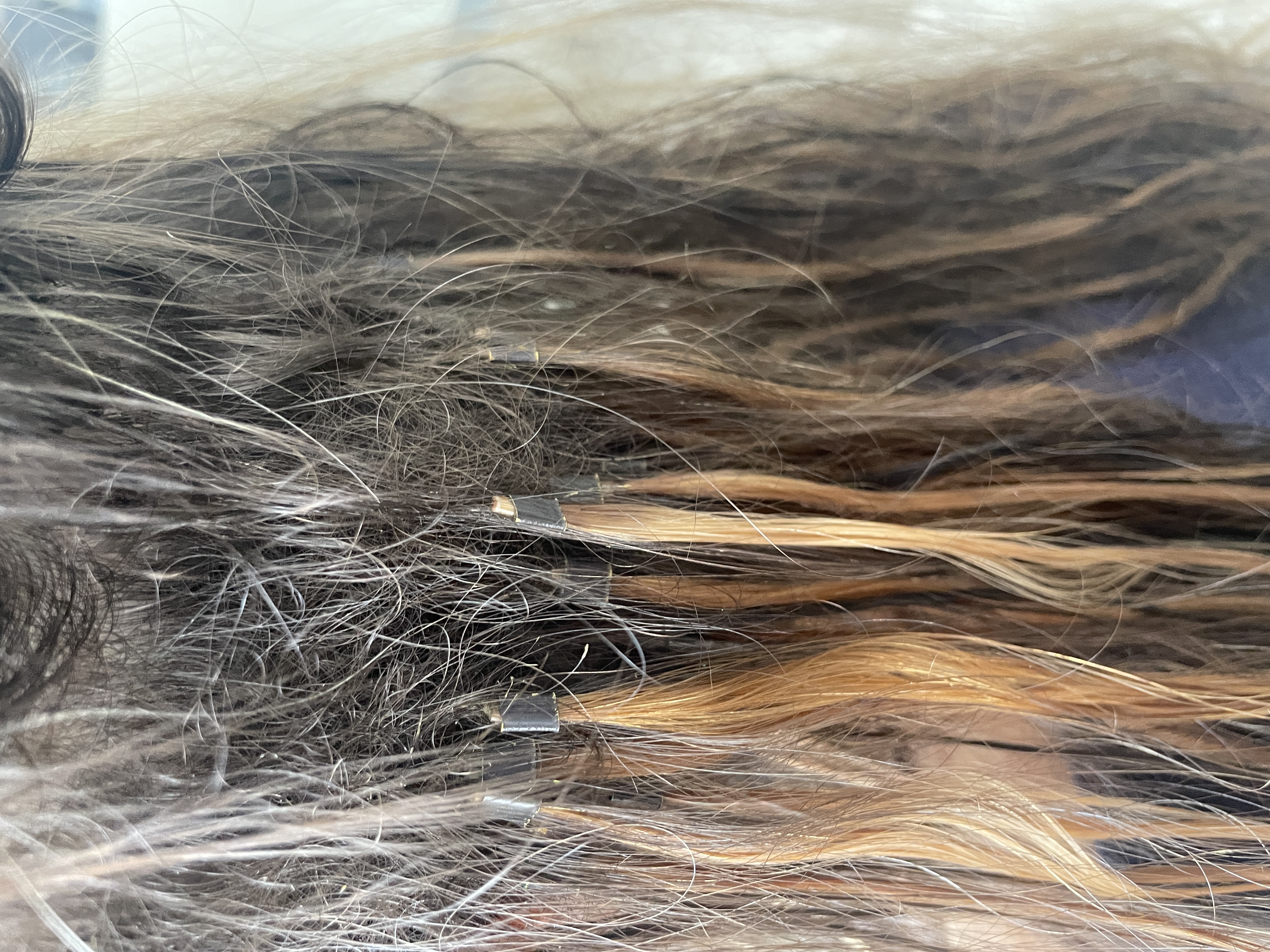
The Natural Process of Hair Shedding
The natural process of hair shedding is vital for the continuous renewal of hair follicles and healthy hair growth, where hair falls out as part of the growth cycle, making way for new hair. Understanding this natural shedding process is essential to distinguish it from abnormal hair loss due to other factors. The rate of shedding varies among individuals, influenced by factors such as hair type, lifestyle, and overall health. Regular care, including a proper hair care routine and a balanced diet, supports a healthy hair-shedding cycle.
Why Does Hair Shed?
Hair shedding is a natural process influenced by factors like genetics, hormonal changes, and the hair growth cycle. External factors such as stress, heat styling, and harsh treatments can also contribute to increased shedding. By understanding the reasons behind shedding, individuals can take preventive measures and care for their hair appropriately.
Normal Hair Shedding Rate
The typical hair shedding rate varies depending on individual factors and can range from 50 to 100 hairs per day. This variation is influenced by hair type, length, care practices, and seasonal changes. Monitoring hair shedding patterns helps track any irregularities, distinguishing between natural shedding and potential extension-related shedding. Understanding one's unique shedding rate provides valuable insights for effective care strategies and maintenance. Seeking guidance from a hair specialist can offer further personalized insights into managing and monitoring individual shedding patterns.
Hair Extensions and Shedding
Understanding the impact of hair extensions on shedding is crucial for proper care and maintenance. Shedding with hair extensions is often misconstrued as attachment-related, but gentle brushing with **a hair extensions brush** that has round-tipped bristles and regular maintenance can minimize shedding. Knowledge of natural hair shedding and extension-specific patterns is essential to manage shedding effectively. Seeking guidance from a specialist advice team is recommended for reducing shedding while maintaining a natural appearance and prolonging the lifespan of human hair extensions. Expert advice and appropriate care techniques are paramount in addressing any shedding concerns.
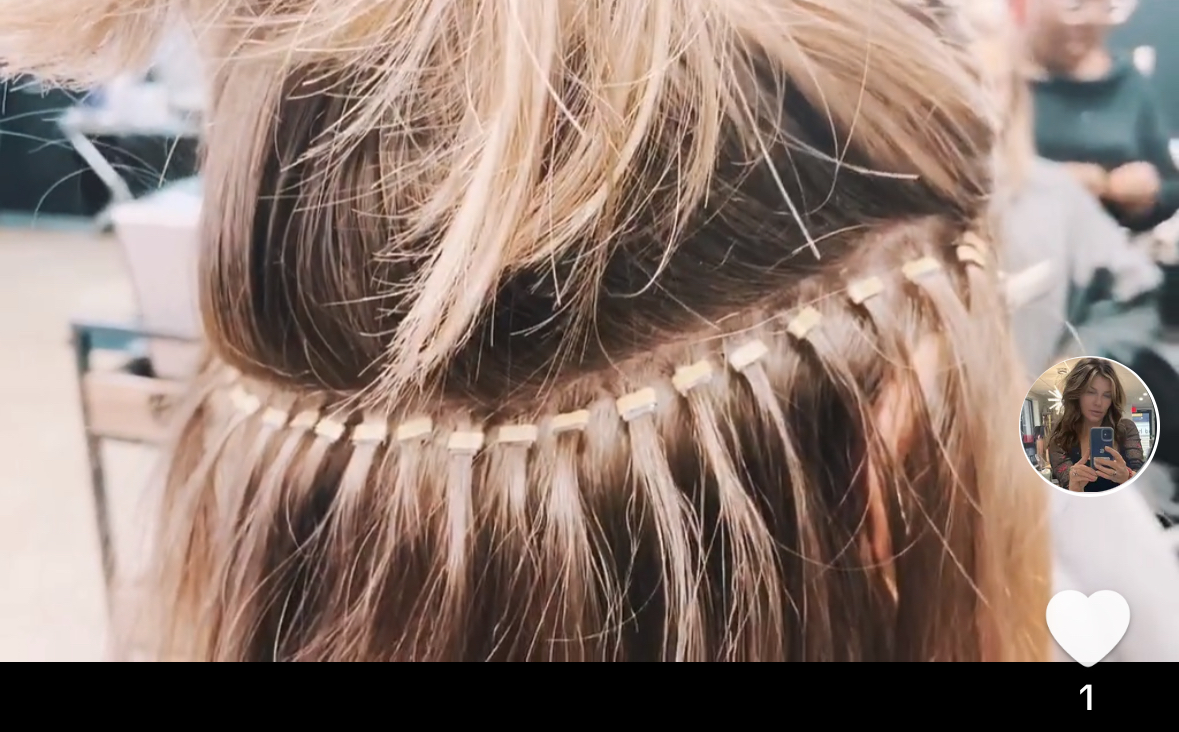
Shedding with Hair Extensions: Is it Normal?
Shedding with hair extensions is a common occurrence, similar to shedding hair with natural hair. Factors such as attachment method, hair type, and maintenance practices can influence the shedding rate. Educating individuals about the normal shed hair process can alleviate concerns and promote proper care. Removing each weft or bond professionally during maintenance helps reduce excessive shedding. Special care and gentle styling contribute to a natural finish and longer lifespan for extensions.
Hair Extensions and Matting
Matting, a common issue with human hair extensions, occurs when the hair becomes tangled or knotted, impacting the natural flow and appearance of the extensions. Proper care, including a consistent aftercare routine, regular detangling, and maintenance of all types of hair extensions, is crucial to prevent matting and preserve the quality of the hair extensions. The type of hair extension, hair care routine, and styling practices can influence the likelihood of matting with hair extensions. Gentle handling, particularly during wet hair, can minimize the risk of matting and preserve the natural waves of the extensions. Utilizing specialist-recommended products and techniques, such as a hair dryer or any heated styling tool, for detangling and maintenance can effectively address and prevent hair extension matting, avoiding issues that cause hair extensions to matt.
Keeping your hair extensions in your hair longer than 6 months is not recommended especially for keratin bonds. Reusable hair extensions like tape-in, Veila Pull-Thru, and beaded sew-in wefts should be removed and reapplied every 8 to 10 weeks. Carefully removing the extensions is paramount, removal should be performed by an extensions expert.
What Causes Matting with Hair Extensions?
Matting with hair extensions can be caused by friction and tangling. Factors like sweat, heat, and prolonged use of extensions can contribute to matting. Poor care and excessive use of hair products can also lead to matting. Regular detangling is necessary to prevent this issue.
Preventing Matting in Hair Extensions
To prevent matting in hair extensions, proper brushing and detangling of extension bonds are crucial. Regular washing and conditioning also play a significant role in preventing matting. Additionally, avoiding excessive heat styling is essential to reduce the risk of matting, especially at the nape of the neck. Furthermore, sleeping in wet hair extensions can exacerbate tangling. Keeping hair extensions in a loose braid during sleep can effectively prevent matting while using minimal hair products and oils can also help in this regard. By following these practices, one can maintain the natural flow and appearance of human hair extensions, preserving their quality and natural roots.
Never pull on your hair extensions, if they are tangling at the ends, it is best to comb through them while you are in the shower, with conditioner in your hair.
The Impact of Hair Extensions on Hair Follicles
Improperly attached human hair extensions can create tension on hair follicles, potentially causing damage. The incorrect removal of tape-ins, keratin bonds especially, or any other type of hair extensions may also lead to harm. Additionally, constant pulling and tight braiding of hair extensions can negatively impact natural root growth and the overall health of the scalp, especially after exposure to chlorine. It is essential to maintain and care for hair extensions properly to prevent undue stress on the hair follicles. Furthermore, heavy hair extensions, especially in longer lengths, can exert considerable pressure on the natural hair, influencing its growth.
Exploring the Weight of Hair Extensions
When considering the weight of hair extensions, it's important to note that it can vary depending on the type and length of the extensions. Heavy extensions have the potential to strain natural hair, possibly leading to shedding. A proper understanding of the weight of hair extensions is essential for their correct attachment, overall comfort, and manageability. Additionally, different hair extension methods may distribute weight differently on the scalp, impacting how they feel and how they affect the natural hair.
How Heavy Hair Extensions Might Lead to More Shedding
The weight of hair extensions can lead to increased shedding over time, as excessive strain from the added weight can weaken natural hair. This mechanical stress may contribute to shedding and hair damage. Understanding the impact of weight on shedding is crucial for those wearing hair extensions. Consulting with a professional and assessing the hair type can help prevent shedding caused by heavy extensions. Proper attachment and weight distribution are essential to minimize the potential for shedding.
Ensuring Your Hair Extensions are Properly Attached
Properly attaching human hair extensions in a salon is crucial for even weight distribution and to avoid discomfort and hair damage. A professional salon assessment ensures secure and safe attachment, making thorough consultation and assessment essential. This minimizes the risk of hair follicle tension, ensuring that tape-ins or tape extension glue are properly applied to prevent shedding and matting. It's important to ensure that your own hair is not pulled into the tape sandwich to maintain natural root integrity and facilitate natural waves.
Signs that Your Hair Extensions are not Properly Attached
Improperly attached hair extensions often lead to tugging, pulling, and discomfort. This can result in headaches and scalp sensitivity, indicating the need for adjustment. Visible gaps between the extensions and natural hair are clear signs of improper attachment. Additionally, uneven weight distribution and slippage suggest that the hair extensions are not properly secured. Regular professional checks are essential for identifying early signs of improper attachment and ensuring the long-term health of both the extensions and natural hair.
The Lifespan of Hair Extensions
Understanding the lifespan of hair extensions is crucial for wearers. It varies based on the type and care, and proper maintenance is the best way to significantly extend it. Professional guidance for care and maintenance is essential. Consultations and regular assessments play a key role in maximizing the lifespan. By understanding these factors and following expert advice, individuals can ensure their human hair extensions last longer, especially when using natural ingredients, and avoid excessive use of heating styling tools.
How Long Can Hair Extensions Stay in Your Hair?
The duration of hair extensions in your hair depends on various factors, such as the type of extensions and the care that you provide. By taking special care of extensions following regular maintenance routines and seeking professional advice, you can prolong the life span of your hair extensions. For more insights, check out this blog post on understanding how your natural hair growth cycle and lifestyle choices impact extension longevity, which is crucial.
How the Duration of Wearing Extensions Influences Shedding
The duration of wearing extensions can significantly impact shedding. Extensions that are regularly worn may experience more shedding due to the natural hair cycle, especially with longer wear time. This shedding may increase over time, particularly with permanent hair extensions, and it can also depend on the type of hair extension and natural hair shedding rate. Furthermore, shedding may occur more in thin hair types, especially with longer extensions, emphasizing the influence of wear duration on shedding.
Caring for Your Hair Extensions
Proper maintenance is vital for the longevity of human hair extensions. This care minimizes shedding and matting, ensuring a natural finish and longer lifespan. Using a good heat protectant spray safeguards hair extensions from heat damage when using a blow dryer. Following advice from our squad of dedicated hair experts guarantees optimal results. Carefully tending to tape-ins and utilizing a hair extension brush with natural ingredients contributes to a natural root look and prevents matting. It's essential to connect with the WhatsApp team today for guidance on maintaining natural waves and longer lengths.
Essential Hair Extension Care Tips
When it comes to essential hair extension care, using natural oils is crucial for nourishing and maintaining human hair extensions. Harsh alcohol smell sprays should be avoided, and it's advisable to consult a specialist advice team for expert care of extensions. For those with thick hair, opting for nano ring hair extensions can provide a natural finish. It's important to note that permanent hair extensions require full consultation and regular maintenance for best results, ensuring that the extensions stay in great condition for longer lengths.
How Regular Maintenance Helps Reduce Matting and Shedding
Regular upkeep plays a crucial role in preventing stubborn tape and glue build-up in hair wefts. The removal of each weft, application of a layer of remover, and use of a heated connector tool help minimize matting, preserving the natural waves and slight waves of human hair extensions. Moreover, regular maintenance ensures the elimination of leftover tape extension glue and prevents the natural root hair from tangling. For best results, it's vital to seek guidance from the WhatsApp team today to maintain longer lengths and ensure minimal shedding.
Are Hair Extensions Damaging My Hair?
Hair extensions, when properly cared for, should not cause damage to your natural hair. With proper attachment methods and guidance from specialists, extensions can be worn without any harm. Visit the main page of a hair blog for tips on how to care for your extensions and prevent damage.
Conclusion
To ensure that your hair extensions remain in good condition and provide you with the desired look, it is important to understand the natural processes of shedding and matting. Shedding is a normal part of the hair growth cycle and can occur with or without extensions. However, if you notice excessive shedding or matting, it may be a sign of improper attachment or care. Properly attaching your extensions and following a regular maintenance routine can help minimize shedding and prevent matting. Additionally, it is important to choose the right weight and duration for your extensions to avoid unnecessary stress on your hair follicles. If you have any concerns about the health of your hair or need professional guidance, book a free consultation with our experts. like Bellami, Luxy hair, and Donna Bella hair extensions.

